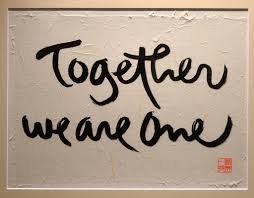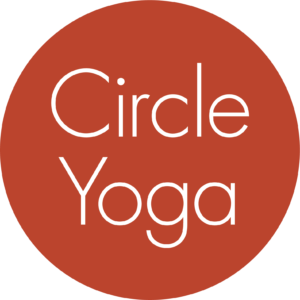December 2016

I remember one of the first times I heard Thich Nhat Hanh speak. He shared thoughts about his work and life during the Vietnam War. Thich Nhat Hanh, or Thay (a title of respect, which means teacher,) often spoke about how difficult that time was for him, particularly because he refused to line up with one side or the other. Although he was against the horrors caused by the war, he didn’t side with either the communists or the anti-communists or make one side a friend and the other an enemy. He was eventually expelled from Vietnam because each side assumed he must be supporting the other side.
When I first heard about his experiences during the war, I thought it was nothing more than an interesting history lesson. I was a young child during the time of the Vietnam War, and while I remember the anti-war movement here, of which my family was a part — we had the yellow “War is Not Healthy for Children and Other Living Things” poster on the wall directly across from our front door — but I was too young to know that there were other people out there who supported the war. Hearing Thay’s words, I thought, “Yeah, that makes sense not to take sides.” I didn’t consider this to be a mindfulness teaching because I didn’t think about why one might not take sides, though I generally supported not taking sides by preventing politics from creeping into our yoga and mindfulness community as much as possible.
November 2016
Fast forward to November 2016, when we experienced the most polarizing election in my lifetime. The day after the election, I received several texts from family and friends in various states of panic, asking me what I thought was going to happen to us. Conversations were filled with judgments about the “others” and fear about what the perceived enemy might do to “us.”
In addition to feeling righteous, I was suffering. And when I suffer, I look to mindfulness practice to help me transform my suffering. As I searched my mental files for a relevant teaching, I remembered Thay’s suggestion about not taking sides. I began reading more about how he stayed neutral during the Vietnam War, even as bombs were killing his loved ones, and more than one of his students immolated themselves. But I also worried whether not taking sides was just an easy excuse for non-action.
As I dug deeper into this practice, I discovered the many ways in which Thay and his students worked for peace and justice, rebuilding cities after bombs destroyed them and speaking out, both in Vietnam and in the West, against the pain the war was causing civilians. It became clear that the practice of not taking sides doesn’t prevent anyone from voting, speaking and acting out, or working for justice. What it means is that I choose not to personally condemn anyone I disagree with or tell myself that one side is all good and the other all bad. As the Dalai Lama likes to remind us, “From the moment of birth, every human being wants happiness and does not want suffering.” We all want the same things in life — things like food, shelter, love, connection, freedom from fear, and safety for our loved ones — but we don’t always agree on the strategies to get them.
Thich Nhat Hanh worked for peace, without making either side into an enemy. And his practice has been my inspiration, my North Star, since November 9. I know it is not possible to be completely free from judgment or enemy-making, but it’s an important practice for me right now because it supports my deepest intention of generating understanding and love in order to transform suffering. It’s not easy, though. Taking sides in a conflict gives us a team, and without a team it can be lonely. And there are many benefits to being on a team, including the feeling of belonging and strength in numbers. The more we create an enemy “out there,” the more our team solidifies “in here.” We all need a team, but the team I am looking to join now is the one on the side of understanding and compassion.
So what’s wrong with taking sides against an enemy?
There are three main difficulties that arise for me when I take sides against an enemy. First, I am limited in what I can do. For example, if I judge everyone who voted for the other candidate as bad or all wrong, I can’t contribute to our government working together or help people who voted for one candidate understand why some of us voted for the other. As Marshall Rosenburg, creator of Nonviolent Communication, has said, “It’s through connection that solutions materialize – empathy before education.”
Second, taking sides and creating enemies often leads to conflict and eventually to war. The more one side digs in, the more the other side digs in. We are more likely to continue seeing someone’s faults after we have judged them an enemy. We can look at the history of every conflict from the death of Jesus to the civil war in Syria, to see how division and side-taking leads to more division and side-taking. I believe that none of us really wants this outcome, but once we have created an “us” and a “them” it’s difficult to undo. Every adult I know still aligns strongly with their hometown sports teams, and it’s the same way with our political teams.
And thirdly, although we feel safer when we are part of a crew, having a common enemy increases our overall suffering. Once we have created enemies, we live in fear about when and where our enemies will strike us. There’s no rest for us when we are a divided people.
“THIS DOES NOT MEAN THAT WE MUST BE SILENT ABOUT INJUSTICE. IT JUST MEANS WE SHOULD DO IT WITH AWARENESS AND NOT TAKE SIDES. WE SHOULD SPEAK THE TRUTH AND NOT JUST WEIGH THE POLITICAL CONSEQUENCES. IF WE TAKE SIDES, WE WILL LOSE OUR POWER TO HELP MEDIATE THE CONFLICT.” — THICH NHAT HANH, BEING PEACE
Like Thich Nhat Hanh, not taking sides doesn’t mean we can’t say or do things to help change a difficult situation. We can still speak out against injustice, oppression, and hate. As Dr. Martin Luther King Jr. said in his sermon at the Dexter Avenue Baptist Church in Montgomery, Alabama in 1957:
“Because if you hate your enemies, you have no way to redeem and to transform your enemies. But if you love your enemies, you will discover that at the very root of love is the power of redemption. … And that [way] is to organize mass non-violent resistance based on the principle of love…We must discover the power of love, the power, the redemptive power of love. And when we discover that we will be able to make of this old world a new world. We will be able to make men better. Love is the only way. Jesus discovered that…So this morning, as I look into your eyes, and into the eyes of all of my brothers in Alabama and all over America and over the world, I say to you, ‘I love you. I would rather die than hate you.’ And I’m foolish enough to believe that through the power of this love somewhere, men of the most recalcitrant bent will be transformed.”
Practicing Side-less-ness
This practice is not easy. Taking the side of understanding and compassion without explicitly taking a side as for- or against- Hillary Clinton or for- or against-Donald Trump doesn’t make us very popular. Like Thay, we may be exiled from our own communities. But perhaps our overall impact on the situation is more important than our popularity. Now that I understand a little better what it means to practice not taking sides, I have so much respect for those, like Thay, who choose not to take sides during war and other violent conflicts. When we choose to take only the side of understanding and compassion, we have the chance to really transform divisive situations through wise action which no longer needs to make our side look good and their side look bad.
Give it a try, or let me know why you don’t think it will work. I’m want to learn how others are using yoga and/or mindfulness to help inspire and heal our country and the world these days. Please consider sharing something here or in another forum so we can create a community firmly rooted on one side — the side of understanding, compassion and love.
with love,
annie.

Dear Annie,
I appreciate your walking through your thinking about this current difficult time for our country. Thank you for spelling out your understanding of how it works not to take sides, from your own history with mindfulness. It is also good to be able to look directly to relevant passages from Thich Nhat Hanh and Martin Luther King’s thinking.
Pat Papero
Thanks, Pat. Appreciate you taking the time to read it and consider. xo
You comments are very helpful Annie. Lots to think and try to put into practice.
Thanks, Catherine. It’s not easy to practice, that’s for sure! xo
I decided after the election not to listen to or read the most divisive commentaries.
this resolve is aided by my mindfulness practice.
i am looking for a way to be involved in this new government in ways other than protest marches.
Thanks for sharing what you’re doing, Cathy. I agree that watching and listening to the angry divisive comments doesn’t help us. I’m thinking about getting off twitter because I find lots of anger there every time I look, and not so much substance. Maybe you could consider running for office to get involved in the government… xo
Annie thank you so much for this. It is very helpful to me – I have been carrying alot of fear. I have also tried to engage in some dialogue with someone I know and care for and who explained why many “people she knows” voted for Trump. I found it almost more difficult than staying in my silo. Because it involved complete ignoring of the things that are so terrifying about Trump; and it also triggered my own enormous vulnerability around “denial” – denial of abuse makes me feel incredibly unsafe, and when someone I respect or like does it, it is much worse. I am continuing to try to put one foot in front of the other on this. How can we continue the dialogue – in person??? I will also post your blog on my FB, if I can figure out how. 🙂
Thanks for your thoughts, Joan. I am with you about denial- it triggers me too. And sometimes people in denial really aren’t able to see their patterns or impact. And it’s so important to make sure people are safe. Would love to talk in person sometime in the new year. Love. Xo